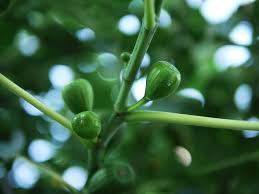
It was the Monday of the week of Jesus death on Friday and resurrection on Sunday. The dichotomy of this one week is stark, as Jesus was praised by thronging crowds on Sunday in what appeared to be his moment of triumph. In just five days, stirred up by the religious leaders, no doubt some of the same crowd that had cheered, “Hosanna! Blessed is He who comes in the name of the Lord,” would be screaming, “Crucify Him! Give us Barabbus!”
As Jesus approached Jerusalem, a microcosm of this contrast between the hollow religiosity and the living Son of God would play out as a hungry Jesus approached a fig tree that was full of leaves, expecting to pick and eat the tree’s fruit. The story is recorded in Mark 11:12-14. (ESV)
On the following day, when they came from Bethany, he was hungry. And seeing in the distance a fig tree in leaf, he went to see if he could find anything on it. When he came to it, he found nothing but leaves, for it was not the season for figs. And he said to it, “May no one ever eat fruit from you again.” And his disciples heard it. (ESV)
The very next morning as they journeyed back into Jerusalem from Bethany, Peter was amazed the the fig tree was withered and dried up from the roots. Indeed, no one would ever again pick a fig off this dead tree.
Reading this story, it seems a bit unfair that the fig tree was cursed. After all, the scripture is clear that “it was not the season for figs.” So why did Jesus expect to get figs out of season? Furthermore, when he found no out of season figs, why did He curse the tree?
To understand this illustration, you must first understand this fact about fig trees: as the picture above shows, the fig tree buds differently than other trees. It buds fruit first, then it grows leaves. This is very different from any other fruit tree that I know. Most bear leaves, then bud blossoms which will become apples, peaches, etc. By the time the fig tree was fully covered with mature leaves, there should have been edible fruit. This is what attracted Jesus to the tree in the first place. Ahead of the normal growing season, this tree had the full look of a fruitful tree. But when Jesus approached it, this out of season tree had skipped it’s primary purpose – bearing fruit – and had gone straight to the outwardly visible signs of a mature tree – a full show of leaves.
Jesus, the Word Made Flesh, had spoken at the dawn of creation, “Let the earth sprout vegetation, plants yielding seed, and fruit trees bearing fruit in which is their seed, each according to its kind, on the earth” (Gen. 1:11). The purpose of the tree from the beginning was to produce fruit.
Likewise, the purpose of every believer is to bear fruit. The first command to the Man and Woman in the Garden was to be fruitful (Gen. 1:22). The Commission to the Church was to go everywhere and make [more] disiciples (Matt. 28:19). Jesus had already declared that every branch connected to Him would be a fruitful branch (John 15:5). Paul challenged Timothy to sow the fruitful seed of the Word of God by preaching both in and out of season (2 Tim. 4:2). Fruit is our primary purpose.
Unfortunately, many believers spend their primary energy on the outward show of Christianity. We want to appear that we are “blessed and highly favored.” We want to make sure we have the right look, wear the right accessories, and talk the talk of an on-fire Jesus follower. Like the barren fig tree, we resemble the Laodiceans more than the Lord. Jesus’ words to this luke warm church are recorded in Revelation 3:17:
“For you say, I am rich, I have prospered, and I need nothing, not realizing that you are wretched, pitiable, poor, blind, and naked.” (ESV)
In other words, “Church, you are quite leafy and attractive from a distance. You appear to have something. But upon close examination, you are really unfruitful – you have nothing.”
Jesus would make this same austere declaration about the religious leaders of the day when He compared them to whitewashed sepulchers. With all their religious trappings, they were like beautiful edifices on the outside that held death on the inside (Matt. 23:27).
Jesus’ cursing of the fig tree was a statement about fulfilling God’s purpose rather than putting on a good show to impress people. While the first brings abundant blessing in all areas (Matt. 6:33), the latter will puff you up so full of pride that you will miss the hand of God right in front of you, just like the oh-so-spiritual Scribes, Pharisees and Sadducees.
By the morning of the seventh day, the real moment of triumph had occurred. The Giver of Life Himself ahd laid down His life and taken it back up. He was alive! And the unfruitful trees who tried to take His life were still dead!
2 Corinthians 5:15 says it best:
“He died for everyone so that those who receive his new life will no longer live for themselves. Instead, they will live for Christ, who died and was raised for them.” (NLT)
Those who receive His life now live for His purpose:
“By this My Father is glorified, that you bear much fruit; so you will be My disciples.” (John 15:8 NKJV)
The real test of relationship with God is not our appearnce to others. It’s the fact that the main focus of our energy is to bear fruit first!

Recent Comments